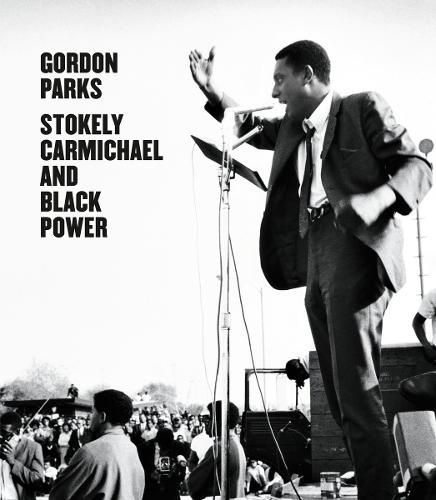Readings Newsletter
Become a Readings Member to make your shopping experience even easier.
Sign in or sign up for free!
You’re not far away from qualifying for FREE standard shipping within Australia
You’ve qualified for FREE standard shipping within Australia
The cart is loading…






Gordon Parks’ 1967 Life magazine essay Whip of Black Power is a nuanced profile of the young and controversial civil rights leader Stokely Carmichael. As chairman of the Student Nonviolent Coordinating Committee, Carmichael gained national attention and inspired media backlash when he issued the call for Black Power in Greenwood, Mississippi, in June 1966. Parks, on contract with Life, shadowed him from the fall of 1966 to the spring of 1967, as Carmichael gave speeches, headed meetings and promoted the growing Black Power movement. Parks’ photos and writing addressed Carmichael’s intelligence and humor in equal measure, presenting the whole man behind the headline-making speeches. In his finely draw n sketch of a leader and a movement, Parks reveals his own advocacy of Black Power and its message of self-determination and love.
Stokely Carmichael and Black Power delves into Parks’ groundbreaking presentation of Carmichael, and provides a detailed analysis of his images and accompanying text about the charismatic leader. Essays by Lisa Volpe and Cedric Johnson shed critical new light on the subject: Volpe explores Parks’ complex understanding of the movement and its leader, and Johnson frames Black Power within the heightened social and political moment of the late 1960s. Carmichael’s own voice is represented through a reproduction of his important essay What We Want from September 1966.
$9.00 standard shipping within Australia
FREE standard shipping within Australia for orders over $100.00
Express & International shipping calculated at checkout
Gordon Parks’ 1967 Life magazine essay Whip of Black Power is a nuanced profile of the young and controversial civil rights leader Stokely Carmichael. As chairman of the Student Nonviolent Coordinating Committee, Carmichael gained national attention and inspired media backlash when he issued the call for Black Power in Greenwood, Mississippi, in June 1966. Parks, on contract with Life, shadowed him from the fall of 1966 to the spring of 1967, as Carmichael gave speeches, headed meetings and promoted the growing Black Power movement. Parks’ photos and writing addressed Carmichael’s intelligence and humor in equal measure, presenting the whole man behind the headline-making speeches. In his finely draw n sketch of a leader and a movement, Parks reveals his own advocacy of Black Power and its message of self-determination and love.
Stokely Carmichael and Black Power delves into Parks’ groundbreaking presentation of Carmichael, and provides a detailed analysis of his images and accompanying text about the charismatic leader. Essays by Lisa Volpe and Cedric Johnson shed critical new light on the subject: Volpe explores Parks’ complex understanding of the movement and its leader, and Johnson frames Black Power within the heightened social and political moment of the late 1960s. Carmichael’s own voice is represented through a reproduction of his important essay What We Want from September 1966.